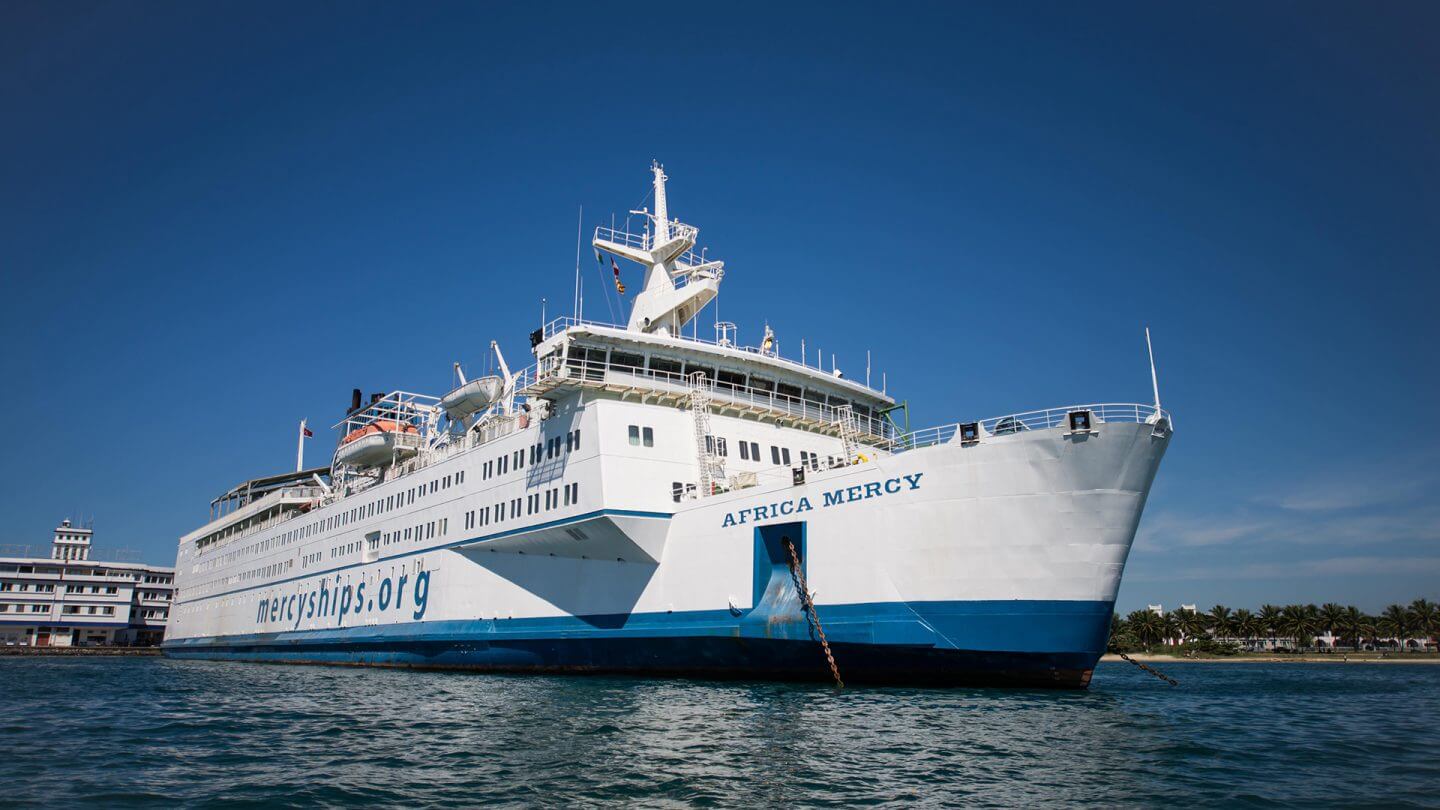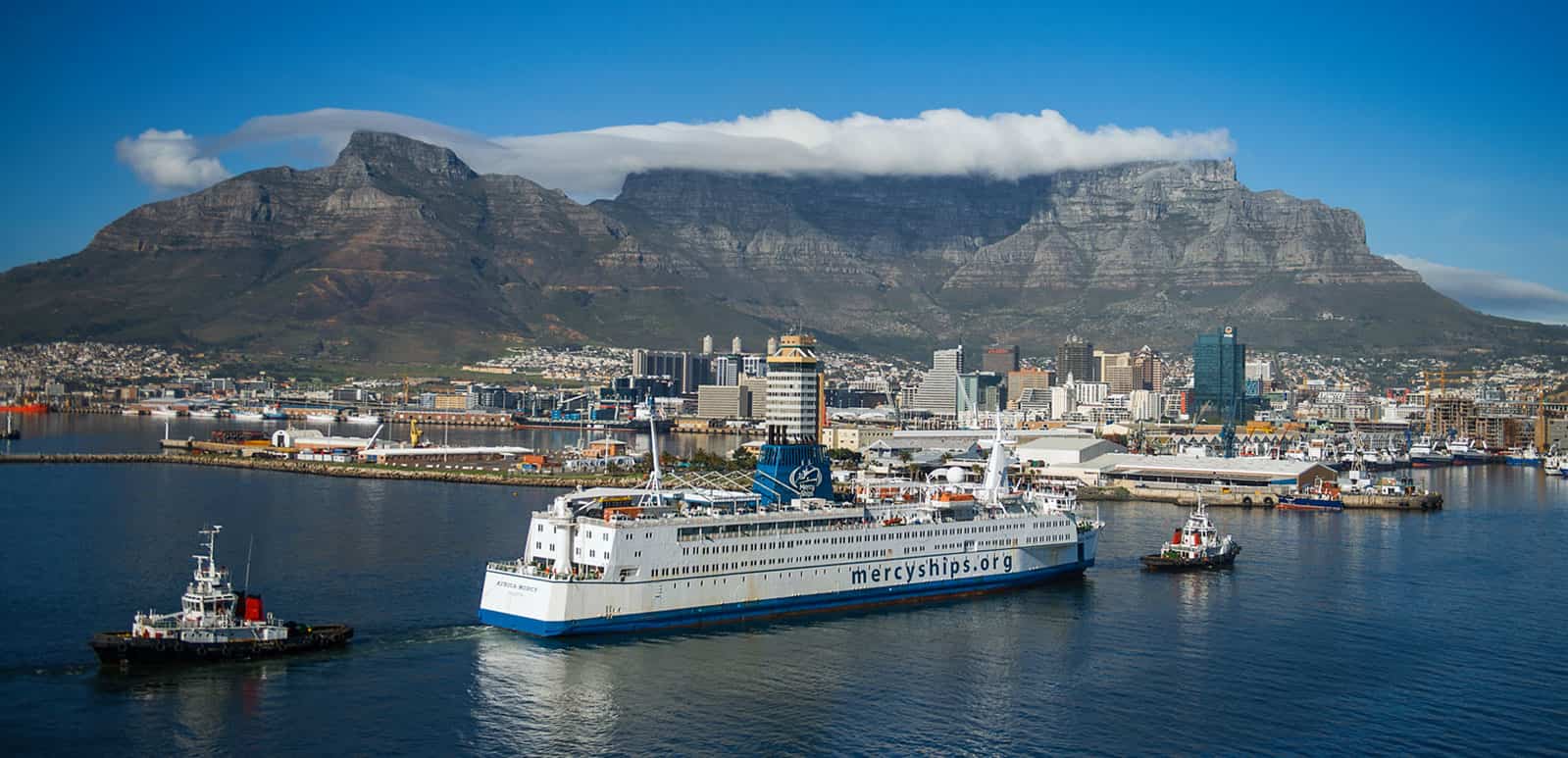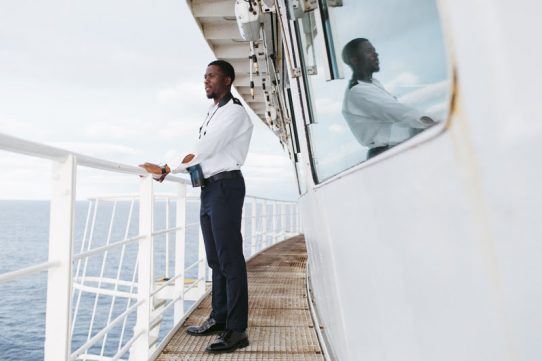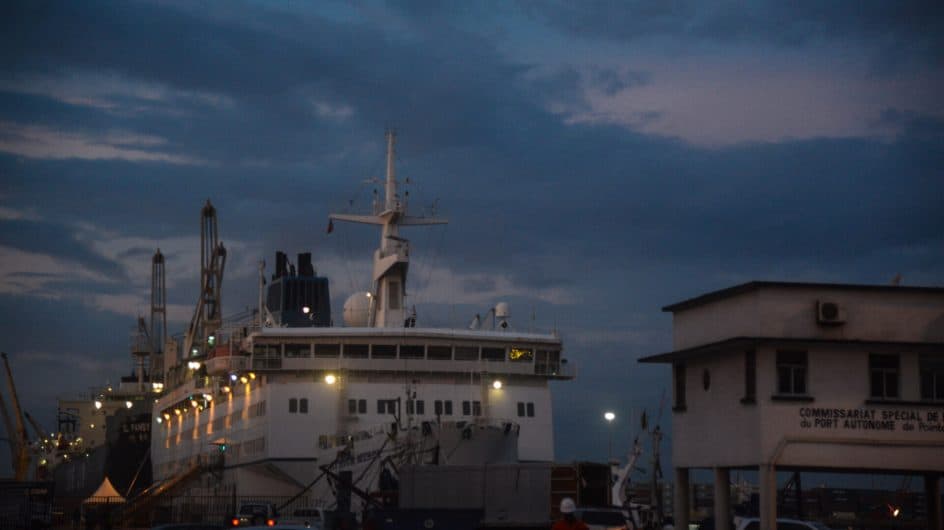Africa Mercy
History
Acquired in 1999 through an initial Balcraig Foundation donation, the ship was re-named the Africa Mercy by Dame Norma Major in April 2000. The ship is in service since 2007.
Field Services
Since 2007, the Africa Mercy has conducted 16 field assignments, serving Liberia, Benin, Togo, South Africa, Sierra Leone, Guinea, Republic of the Congo, Madagascar, Cameroon, Senegal, and The Gambia.
Ship specifications:
| Length | 152 m | Breadth | 23.7 m |
| Gross Tonnage | 16,572 | Built | 1980 Elsinore, Denmark |
| Registered | Malta | Crew Capacity | 474 |
| Cargo Capacity | 1.724 m3 | Main Engines | 4 B&W (3120 KW each) |
| Draft | 6.0 m | Surveyed By | Bureau Veritas |
Hospital
The hospital covers most of the original rail deck – approximately 1,200 square metres. It is divided into quadrants containing supply/services, five operating rooms, a four bed recovery, intensive care for up to five individuals and 80 ward beds. The volunteer crew provides free surgical procedures on board including cataract removal/lens implants, tumour removal, cleft lip and palate reconstruction, orthopaedics (club feet and bowed legs) and Women’s Health (including obstetric fistula repair), Plastic, General surgeries as well as some Ambulatory Day Surgery procedures. The hospital contains a CT Scanner, X-ray, and laboratory services which support the surgical service.
Medical Capacity (Training and Infrastructure Development)
The Africa Mercy also serves as a platform to deliver high-quality training to local healthcare providers as a sustainable means of bolstering a country’s healthcare system. Training interventions ensure that healthcare providers use proper practices to reduce the risk of lengthy hospital stays, mishaps, and hospital acquired infections. These training courses are not only focused on surgical care (safe anaesthesia administration and care, WHO Safe Surgery Checklist, Primary Trauma Care, and Essential Surgical Skills) but also various paramedical healthcare services (e.g. Biomed, Sterilization), and an agricultural training programme. When appropriate, Mercy Ships may bolster these training efforts with equipment donations and/or facility renovations to ensure the trainees are as effective as possible.
Crew and Accommodation
The Africa Mercy has meeting and work spaces as well as berths for an average crew of 400 from many nations serving onboard at any given time. Each year, more than 1,100 professional volunteers from over 60 countries serve on board the Africa Mercy. The 481 berths are split between family cabins, two-berth cabins for couples and shared and single cabins for individual occupants.
Safety & Security
The vessel is fitted with an automatic sprinkler system throughout the accommodation and hospital areas. An addressable smoke detector system pinpoints the exact location of the source of any potential fire. Machinery spaces are covered by CO2 gas flooding system as well as a “Hi Fog” system which can be very effective in controlling localised fires in the machinery space. Gurkha security guards man the gangway 24 hours a day with metal detectors and other screening devices. They are backed up by CCTV around the vessel, while critical spaces such as the bridge and engine room remain locked at all times.





